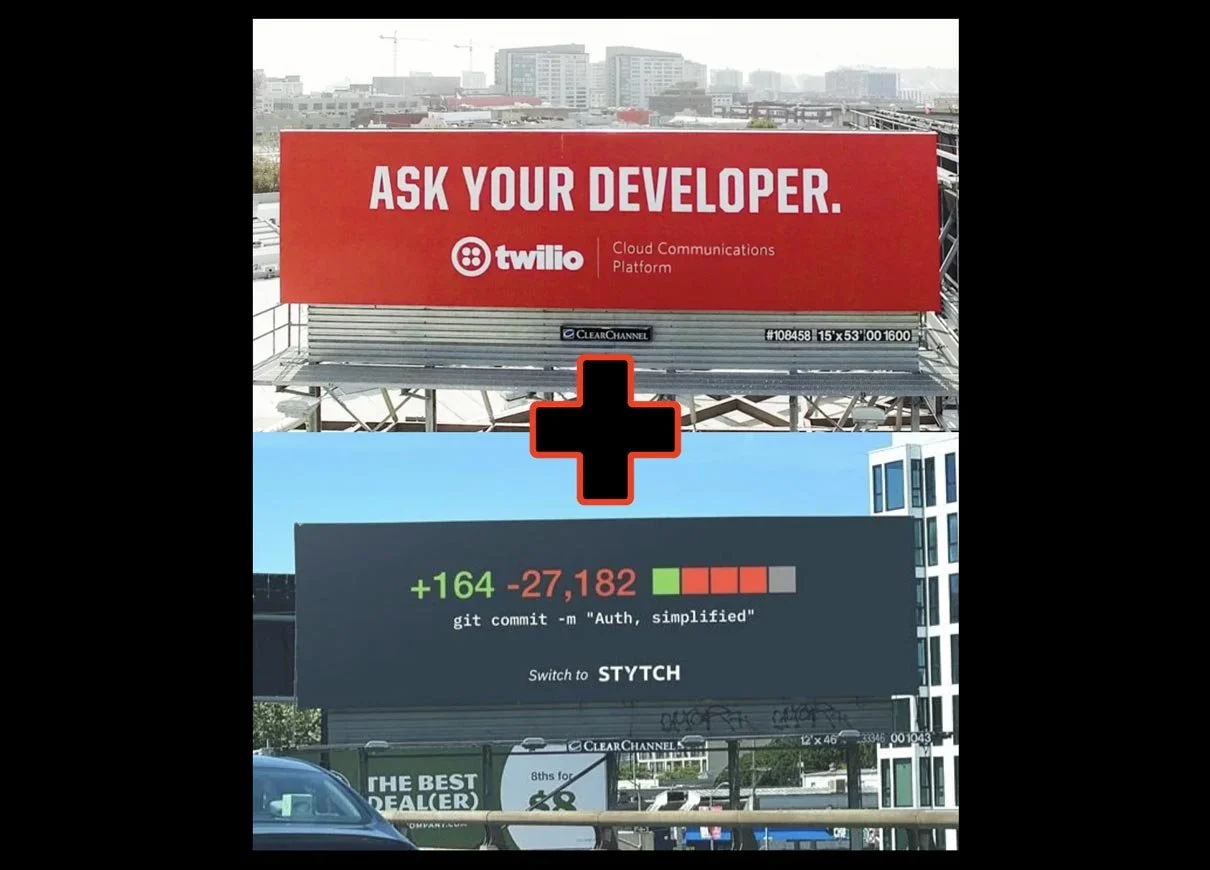The Twilio billboard is iconic in San Francisco, while Stytch’s outdoor campaigns, created by Division of Labor, quickly built brand awareness and good will with their audience.
Twilio bought Stytch. OpenAI bought Statsig.
Sure, both had killer products — authentication and experimentation platforms that engineers swear by. But here’s the bigger story: they didn’t just build great tech; they built great brands.
From day one, both companies understood something that a lot of startups miss — a strong brand isn’t just for customers, it’s for acquirers.
When you invest early in brand, you’re not just marketing; you’re de-risking your future. You’re signaling maturity, vision, and trust. You’re making it easier for a company like Twilio or OpenAI to see you not as a startup gamble, but as a strategic fit.
Startups that treat brand as part of their core infrastructure end up building more than a product — they build an identity that’s worth acquiring.
That’s exactly what Stytch and Statsig did. They knew their story. They knew their audience. And when the big names came knocking, they already looked like they belonged in that league.
The Brand Multiplier Effect
M&A deals get justified with spreadsheets, market sizes, and synergies — but the headlines come from the brands.
Twilio has spent years building its reputation around empowering developers and making the impossible easy. They even ran a now-famous billboard that simply said: “Ask Your Developer.” Now, Division of Labor had absolutley nothing to do with that billboard, except maybe a whole lot of jealousy.
That one line turned into a movement — a statement that Twilio wasn’t just selling APIs; it was championing the people who use them. That’s branding at its best: when a tagline becomes cultural currency.
OpenAI, meanwhile, has built an identity so powerful it’s practically a synonym for “the future.” So when either company makes an acquisition, the narrative writes itself. It’s not just an expansion — it’s a statement.
When Apple buys something, we assume it’s the future. When an unknown company does, we assume it’s a pivot.
That’s the brand multiplier effect: strong brands don’t just make news — they shape it.
What This Means for Startups Like Yours
Founders love metrics. DAUs, CAC, churn, NRR — you name it. But ask them what their brand stands for, and you’ll get a pause longer than a funding winter.
The truth is, your product earns usage; your brand earns belief.
Stytch and Statsig were like thousands of other startups when they and Division of Labor started working together. But each company had a vision. They knew the power of their brand and they treated it like a product, to be nurtured and built into something great. And in a short time, they were trusted players who made a huge impact within their ecosystems. They communicated clarity, purpose, and confidence. They looked like companies that would eventually get acquired — because they acted like it.
At Division of Labor, we’ve seen it firsthand with clients like Delve, PromptQL, Hirect, Ontra Stytch, and Statsig — startups that invest in brand early don’t just scale faster, they get noticed faster. And that’s often what gets them to the next stage of funding… or the next big exit.
Brand as the Silent Valuation Driver
Every investor and acquirer will tell you they’re buying the tech or the team — but perception always sneaks into the spreadsheet.
A recognizable, trusted brand makes due diligence smoother, valuations higher, and post-acquisition integration easier. It’s the intangible that becomes tangible when the deal closes.
You can’t measure brand on a dashboard — but it shows up in your exit multiple.
How to Build Awareness Before the Exit
If you want to be bought by a big brand, act like one.
Here’s how startups can start early:
Own a problem space, not just a product space. Be the name people associate with a pain point.
Build a founder narrative. The media doesn’t write about companies; it writes about people.
Get creative. Break out of the B2B blah-blah-blah and say something that earns attention.
Seed PR hooks early, not after you need them.
Speak like a company that expects to be acquired. Confidence is magnetic.
Your brand is how people imagine you — and if that imagination is powerful enough, it’ll eventually pull an acquirer into your orbit.
Acquisitions Reward the Brave
In the end, Twilio didn’t just buy infrastructure — it bought what Stytch stood for. OpenAI didn’t just buy analytics — it bought a belief system about how products improve.
Because brand turns a transaction into a headline. It turns awareness into leverage. And it turns “nice product” into “we need to buy them.”
Ready to make your startup acquisition-worthy? Let’s build a brand worth buying.
#######
The Small Agency Blog is produced by Division of Labor; a top San Francisco ad agency and digital marketing firm. The award-winning creative shop specializes in startups that have obtained Series B funding or higher. They also offer freelance services. Click here for a free consultation.

